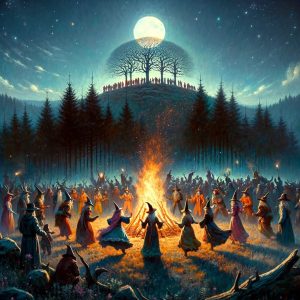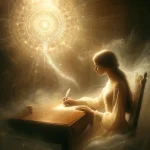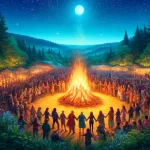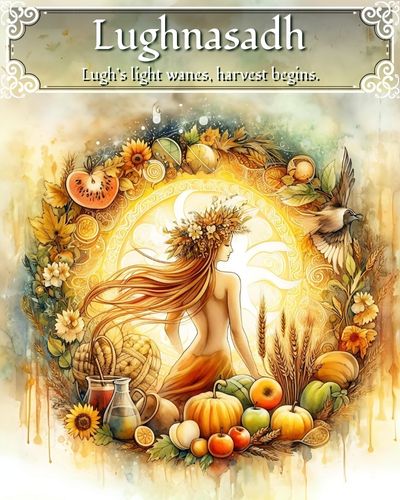
Approx. Reading time: About 9 Minutes

Introduction
Cartomancy is fortune-telling or divination using a deck of cards. Forms of cartomancy appeared soon after playing cards were first introduced into Europe in the 14th century. Cartomancy began centuries ago and was a favorite pastime of royals in European courts. Cartomancy can be traced back to Europe as far as 1360, but it really rose to prominence between the 18th and 20th centuries. Practitioners of cartomancy are generally known as cartomancers, card readers, or simply readers. Cartomancy is one of the oldest of the more common forms of fortune-telling. The term Cartomancy was the umbrella for all divination with decks of cards. In modern times the term has been applied to the use of a standard deck of playing cards for divination.

Types of Cartomancy
Although there can be many types, we are talking about; Tarot, Lenormand, Oracle, and base Cartomancy (Playing Deck Style)
Tarot (Taromancy)
Europe is where tarot card reading originated. According to the manuscript of Martiano da Tortona before 1425, tarot cards were created for playing games. It was in the mid-15th century when it was first played by Europeans. They play card games such as French Tarot and Italian Tarocchini with the deck. The deck of tarot cards was initially made and developed for the reason and cause of recreation and enjoyment for the early people. However, in the 18th century, the pack of tarot cards was redeveloped and was utilized for divination practices and purposes. The first taromancy occurred in Bologna Italy in 1750. Tarot cards were not associated with mysticism and magic until the 18th and 19th centuries.
The modern divinatory tarot began in 1781 when Antoine Court de Gébelin published Le Monde Primitif, a study that includes religious symbolism in the modern world. De Gébelin claimed that the symbolism of the Tarot de Marseille represents the mysteries of Isis and Thoth. The usage of tarot cards in divination was further developed by Eliphas Lévi. Lévi introduced an interpretation of the cards which are related to Hermetic Qabalah by publishing Dogme et Rituel de la Haute Magie in 1854. From 1910, tarot divination became popular due to the publication of the Rider-Waite-Smith Tarot which replaced the traditional cards with symbolic scene images.
The card readers would use the pack of tarot cards to compute feasible and sensible outcomes on a grand scale such as consequences of natural catastrophes and disasters. Possibly giving warning of coming storms, blizzards, hurricanes, etc. The reader would also use the cards to assess the effect and impact of circumstances that surround or happens to a person.
Tarot Deck
A deck of tarot cards consists of a total of 78 cards, 22 of which are referred to as the major arcana. The remaining 56 cards consist of four suits of 14 cards each and are referred to as the minor arcana. Each card is unique and can have a different meaning depending on the order in which it is drawn and which direction the card is facing.
- The Major Arcana is a set of usually twenty-two cards, sometimes numbered zero to twenty-one (though this depends on whether the specific author/artist included the Fool as a numbered card or not), with no suit. There are usually many more elements in the images specified by the literature for this set of cards. These cards are often interpreted as describing the normal progression of a life and often tell where a person is along their journey, or if they have strayed. Such an interpretation is called the “Fool’s Journey” and it originated with Eden Gray. (Eden Gray, was the professional name of Priscilla Pardridge, an American actress, and writer on the esoteric meanings of tarot cards and their use in fortune-telling.)
- The Minor Arcana closely match Anglo-American playing cards, having Ace-through-Ten and four face-cards. The face cards are Page, Knight, Queen, and King. Each suit of the Minors corresponds to one of the four Alchemical Elements. Pentagrams correspond with Earth, Swords with air, Wands with fire, and Cups with water. The Face cards also correspond to the Elements. The Page is Earth, the Knight is Air, the Queen is Water, and the King is Fire. This makes the Page of Pentagrams (or Earth of Earth), the Knight of Swords (or Air of Air), the Queen of Cups (or Water of Water), and the King of Wands (or Fire of Fire) all considered very strong cards.
Spreads
To perform a Tarot reading, the Tarot deck is typically shuffled by either the subject or a third-party reader and is laid out in one of a variety of patterns, often called “spreads”. They are then interpreted by the reader or a third-party performing the reading for the subject. These might include the subject’s thoughts and desires (known or unknown) or past, present, and future events. Generally, each position in the spread is assigned a number, and the cards are turned over in that sequence, with each card being contemplated/interpreted before moving to the next. Each position is also associated with an interpretation, which indicates what aspect of the question the card in that position is referring to. Sometimes, rather than being dealt randomly, the initial card in a spread is intentionally chosen to represent the querent or the question being asked. This card is called the significator.
Some methods of interpreting the tarot consider cards to have different meanings depending on whether they appear upright or reversed. A reversed card is often interpreted to mean the opposite of its upright meaning. For instance, the Sun card upright may be associated with satisfaction, gratitude, health, happiness, strength, inspiration, and liberation; while in reverse, it may be interpreted to mean a lack of confidence and mild unhappiness. However, not all methods of card reading prescribe an opposite meaning to reversed cards. Some card readers will interpret a reversed card as either a more intense variation of the upright card, an undeveloped trait, or an issue that requires greater attention. Other interpreters point out that card reversal is dependent on the order of the cards before shuffling, so is of little bearing in the scope of a reading.
Lenormand
This deck finds its origins in Paris during the late 1700s. A popular fortune teller existed at this time who was known as Marie Anne Le Normand. It isn’t known if Marie Anne Le Normand created this deck or if it was simply named after her, but as an oracle she certainly used cards. Marie Anne Lenormand supposedly advised leaders of the French Revolution. After her death, game-makers released the Grand Jeu (“Big Game”) and Petit Jeu (“Little Game”), both inspired by her divination practices. During these times, it was risky to be strongly associated with anything perceived to be magic or sorcery.
The earliest known official publication of the Lenormand deck was in Germany in 1779. It was part of ‘The Game of Hope’, which came with dice. The cards were used to create a board and players would move around this board based on dice rolls. The Grand Jeu requires a full deck of playing cards, but the Petit Jeu uses just 36 cards. The Petit Jeu, based on a game of chance designed by a German businessman, borrowed Lenormand’s name and gained popularity in the 1800s.
Lenormand’s meanings are so literal, that they often hit their mark in a way that can be quite eerie. The deck is used to predict what will happen each day, how a relationship will turn out, whether someone will get a job, how events will unfold, and so on. If there is an area of life someone would like to know about or some gossip they would like to hear, Lenormand cards can fill them in on all the details. But be warned that they can also reveal secrets people would like to keep hidden!
Lenormand Deck
A Lenormand Tarot deck typically comes with 36 cards, although some decks do come with extras as there are several variations available. One detail that makes this deck stand out in comparison to other decks: the simplistic nature of the cards and images. What you see is what you get, and it’s up to the reader to understand how to interpret these images. Every card has a specific image on it that has an openly accepted interpretation to use as guidelines when breaking down a spread.
Each of the 36 cards in the Lenormand deck features a well-defined symbol. Just like tarot cards, Lenormand cards are interpreted in combinations. Each card often represents a noun (person, place, or thing) or an adjective (a description or modifier). Tarot card readings tend to draw out a querent’s inner feelings and motivations in order to predict events, but Lenormand cards more often represent concrete or external things. Not that a Lenormand reading would dive into the depths of the subject’s core. Remember that there are infinite card combinations and therefore infinite interpretations!
Interpreting the Spread
Common spreads are drawn as a Pair Reading, 3 Card, 5 Card, Square, and Grand Tableau. Pair Reading is drawing two cards in a quick answer to a question asked. The following 3 or 5 Card draw is more answers. The Square is drawing nine cards in a 3 by 3 square and it’s a multi-dimensional, complex reading for a detailed issue. The Grand Tableau uses all the cards in the deck and it’s for an extremely detailed reading and complex issues.
The significator is the card that represents a querent. A significator is especially important in the Grand Tableau spread, which uses all 36 cards in the deck, described in more depth below. Finding the significator is like finding the spot on a map to study, and the arrangement of cards around the significator will tell important information about a querent’s life. The most basic significators are the Man and the Woman. If they identify as a woman, the Woman represents them. If they identify as a man, the Man represents them. If they want to gain insight into a particular part of their life, they can choose a different significator.
Oracle
An oracle deck is a set of cards that are used as guidance, readers of an oracle deck may use the cards to connect to angels, spirits, or ancestors. In this way, the cards are used as a divination tool to connect to other realms. In the late 18th century, decks were created in which iconic divinatory symbols were associated with each playing card. These oracle cards, as they were called, were designed specifically for divination, and they became the most popular form until the mid-20th century. Oracle cards can be just as effective as tarot cards at providing guidance and clarity; easing fear and anxiety, and helping you tap into intuition and the answers already found within.
The cards can be laid out in any format, and, like the Tarot, are used for guidance and introspection. Some people feel that the positive feeling found with oracle cards is more their speed than Tarot. The imagery on the cards is often light-hearted and inspirational, eliminating the darker mood that some Tarot decks present. In an oracle deck, there’s no set universal number of cards included. There can be as many as the deck’s creator decides are needed. Furthermore, in addition to being presented as a deck of standard rectangular cards, oracle cards can appear as circles, squares, or any other shape.
Oracle Deck
There are nearly endless types of oracle decks. Every deck is unique in its theme and meaning. Oracle decks are one of the decks that a person is encouraged to craft themselves. Unlike making a Tarot deck, where there are 78 specifically defined themes and structures, with an oracle deck, it’s expected to craft the cards and create the meanings. Anyone can make an oracle card deck, but because they are so uniquely personal, don’t speed through the process. One should take their time, creativity, and knowledge all together to craft a deck that’s special to them.
Making an Oracle Deck
It will take time, dedication, and soul-searching, but the best way to start is to write out ideas of things that matter on a spiritual level. Think about what sort of messages would be good for future selves to be aware of. There are always words and quotes that resonate on a spiritual and/or emotional level. A theme for the deck is crucial, take time to brainstorm all the things that inspire like nature, animals, plants, planets, etc.
To make the actual cards use heavy cardstock, pre-cut card blanks, or even bits of recycled cardboard from boxes around the home. Paint, decoupage, or draw the images onto the cards in whatever medium works best, and then add the text for each card. Some people like to design an image for the back of the cards as well—this can be either uniform so that all cards have the same backing, or it can be different for each one. To make them uniform, find a patterned adhesive paper for the backs. It will give the bonus of making the cards sturdier, which means they’ll hold up for a long time.
Using the Deck
Once the deck is created—and this may well be an ongoing, lifelong project for some—be sure to consecrate the cards like any other magical item prior to use. When it comes time to read the cards, experiment a little. Draw one or two cards a day to see what they have to say each morning or play around with various spreads and layouts, and use them in the way that inspires most.
Conclusion
There are several styles of cartomancy. The most common are the tarot, Lenormand, and oracle styles. Although each style is a form of divination, they have varying ways of providing answers. The depth, clarity, and certainty of the answers will be different. There are no rules about only using one style, although there are closed practices that need to be respected. The world has many things to say, and we have a choice of how to listen.
Feel free to comment with questions!













